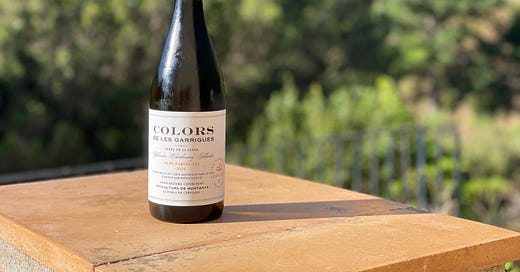With the heatwave season officially underway, this week I’ve been doing what a lot of our readers have also found themselves doing I’m sure and diving into the nearest supermarket to enjoy a blast of industrial-strength air-conditioning. My establishment of choice happened to be a shiny new organic supermarket, and as we wandered the aisles marvelling at the range of tofu on display and the price of organically-certified broccoli, my eye was caught by the tempting range of organic wines on display.
Of course, organic wine has been around for a couple of decades now and wine fans will be familiar with the basics: wine made from grapes farmed organically with no man-made, chemical-based fertilizers, fungicides or pesticides, and strict rules on what can and can’t be added during the winemaking process (especially things like sulphites).
Spain is a bit of a market leader in organics with about 150,000 hectares (c. 15% of the total) of vines farmed organically, with Catalunya the second largest producer, after Castilla-La Mancha, with close to 30,000 hectares of organically-farmed vineyard.
A good spot then for some market research.
After a quick scan of the labels, my eye was drawn to a bottle of Colors de les Garrigues, a white wine from DO Costers del Segre with more information on the bottle than a Spanish tax return explainer. ¨Vi de Parcel.Les¨ (ie made with grapes from a selection of small vineyard plots); ¨short skin contact¨; ¨conscientious agriculture¨; ¨mountain viticulture¨… it seemed all we were missing was a picture of the winemaker’s mother-in-law!
But what really caught my eye, apart from all this very useful info, was the list of the grapes used: Macabeu, Chardonnay and Albariño. An unusual combo, I thought, blending a slightly more Mediterranean variety like Macabeu with the decidedly Atlantic and Galician seafoodies’ favourite Albariño, and the international stalwart, Chardonnay. And the fact that this team lineup was close to the top of the label suggested it was something the winemaker really wanted me to focus on.
In this case, that winemaker is Tomàs Cusiné, one of Catalunya’s most celebrated winemakers who has been making wine across four DOs (Costers del Segre, Conca de Barberà, Montsant and the region-wide DO Catalunya) for over 40 years. His Cérvoles Celler project, which makes Colors de les Garrigues, was set up in 1997 in Les Garrigues, the southernmost sub-zone of the DO Costers del Segres, with the aim of celebrating a traditional approach to mountain winemaking.
Here, vines are planted at between 700 and 750 metres above sea-level, and the landscape is defined by the rivers which rise in the Sierra de Llena, the last mountain range before DO Montsant. Vineyards share the landscape with almond and olive trees, and are surrounded by aromatic plants and pine and oak forests (the word garrigues is derived from the old Occitan word garric, which refers to the kermes oak).
I digress. Back home and corkscrew in hand, I prepared for battle, expecting - hoping? - for a healthy dose of Galician seaspray and zestiness, with something a little more tropical perhaps.
You’d expect a white wine from the 2024 vintage to have a pale sheen to it, but that short skin maceration advertised on the label gave the wine a slightly richer, yellow tinge. Shoving my hooter into the rim, I got a pleasing whiff of white, citrus and stone fruit, with a nice note of honeysuckle that invited me to take a swig. That Mediterranean/Atlantic fruit basket continued on the palate, and the wine had good volume and acidity and a surprisingly long finish.
Tasting done, I had a quick peek at the vineyard’s tech sheet which made much of its trans-Iberia pedigree with lots of mentions of smoothness and acidity, and the promise of a wine that managed to be both ¨fresh and unctious at the same time.¨
Colors de les Garrigues, I would say, sits somewhere between the by-the-glass category and something a little more gastro. Certainly, the winery seems to be pitching to that market, with tips on enjoying it with seafood, sushi and ¨complex¨ salads. But at just under €11 a bottle, this is a very decent white all-rounder that works however you choose to drink it. So I recommend you grab a bottle if you can.
Enjoy!




